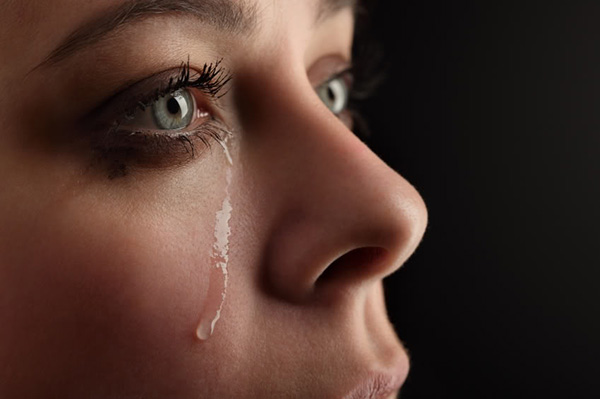There is an anatomic reason for why we have runny nose when crying:
“We get a runny nose as tears go through the nasal cavity. A part of them end up in the nose, causing it,” says Lauren Bylsma. Headaches that occur after crying are, however, more difficult to explain. Some scientists believe that they are caused by dehydration; water loss with tears, while others blame the muscle tension that occurs when we are angry.
A chemical reaction makes us cry when we cut onions:
Propanethial S-oxide is an irritant gas that stimulates the tear glands. It is released when we cut onions and is causes a burning sensation, and for many, crying.
Tears may send signals to others:
At least according to a survey conducted in 2011, men who sniffed the tears of women showed a decrease in testosterone levels and sexual arousal. “We believe that tears contain a chemical signal, and so far we only know that it reduces sexual attraction,” said Noam Sobel, senior author of the study.
Crocodile tears are real:
At least according to researchers at the University of Florida. Kent Vliet conducted a study on seven animals related to crocodiles and concluded that five of them do cry while eating. The reason they do this is however unknown, but there’s no way this is related to any regrets for their victims. “In my experience, when a crocodile bites something, he wish to do it,” says Vliet.
Crying is good, in some cases:
Many of the studies are focused on the cathartic effects of crying, by Lauren Bylsma. The feeling that follows after crying can be good or bad, depending on the social situation in which we find ourselves. Those who cry around people of trust, and those who are in a familiar set-up, feeling comfortable, are more likely to feel better after crying than those who mourn in an environment where they feel vulnerable, insecure, or ashamed. A theory that would explain why many are feeling better after crying with tears caused by emotional states – that contain stress hormones, which are thus eliminated from the body. The alternative would be that crying trigger the release of endorphins, like exercise or laughter.
Tears of joy are not very different from those caused by negative emotions:
Tears arising from happy events are not very different from those caused by moments of anger. “What they have in common is that they occur during moments of strong emotional stimulus,” says Mark Fenske of the University of Guelph. Lauren Bylsma says that crying could help the body return to a state of homeostasis after an emotionally demanding event. Whether it’s about the moments after winning an Olympic medal, or minutes after the marriage, tears may help the body to return to normal operation after a period of intense emotions.
Some people are more prone to cry than others, although the reason is unknown:
It is known that women tend to cry more often, as well as people who have been through trauma, extrovert and empathetic people. In addition to a number of factors that reduce the incidence of crying, such as stress levels, hormonal fluctuations, stress levels, fatigue or mental health, some people are simply more prone to cry often. “Some people ignore or are not affected by things that others cry for,” says Stephen Sideroff at the UCLA (University of California, Los Angeles).
